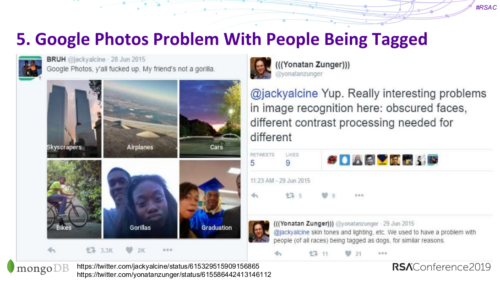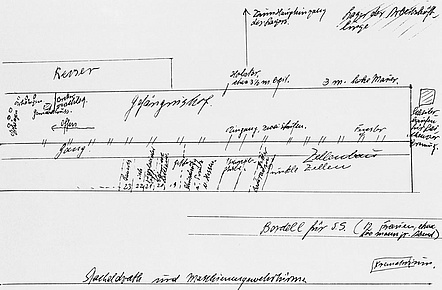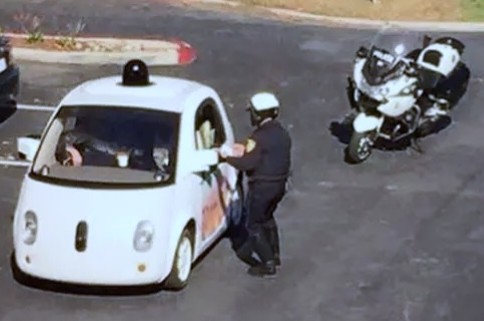When an outsider gets off a plane in Nepal for the first time, all the faces in the airport crowd blur together. A month later, they see Tibetans, Indians, Chinese, Nepalese. Mountain faces, valley faces. Nobody teaches the outsider what to look for. They just experience exposure and the human perceptual system builds the categories.
When a mountain village Maoist teenager points an AK-47 at that outsider, the out-of-place hostile appearance becomes obvious, yet is identified far too late. The outsider arrived with a collapsed face-space for South Asians. A month later, the axes develop to distinguish Sherpa from Tamang from Newar, friendly from hostile. Perceptual learning creates differentiation where statistical exposure builds out reliable dimensions.

As someone who grew up in the most rural prairie in Kansas, I can tell you this is the redneck problem: someone whose environment didn’t provide the data to build certain distinctions is vulnerable.

The person who “can’t tell them apart” isn’t lazy or hostile as much as they are a product of their (often fear based) isolation. They’re accurately reporting self-imposed limited perceptual reality. Their pattern recognition system, stuck out in the fields alone, never benefited from human training data. They could identify lug nuts and clay soil yet not a single tribe of Celts.
The same problem is crippling Western synthetic face detection research related to deepfakes. And it’s a problem I’ve seen before.
Layer Problem
My mother, a linguistic anthropologist, and I published research on Nigerian 419 scams, starting nearly twenty years ago. We said intelligence brings vulnerability and published papers as such. We even presented it at RSA Conference in 2010 under the title “There’s No Patch for Social Engineering.”
One of our key findings: intelligence is not a reliable defense against social engineering.
The victims of advance fee fraud weren’t stupid. They were, disproportionately, well-educated professionals such as university professors, doctors, lawyers, financial planners. People who trusted their reasoning.
I remember one day I was training law enforcement investigators and being told by them, in a windowless square room of white men bathed in drab colors and cold florescent lighting, that this concept of wider exposure would be indispensable to their fraud cases.
A 2012 study in the Journal of Personality and Social Psychology then proved our work and found the same pattern more broadly: “smarter people are more vulnerable to these thinking errors.”
These researchers, without reference to our prior work, found that higher SAT scores correlated with greater susceptibility to certain cognitive biases, partly because intelligent people trust their own reasoning from their past success and don’t notice when it’s being disrupted, being bypassed.
The attack works because it targets a layer below conscious analysis. You can’t defend against bias attacks with intelligence, because intelligence operates at the wrong layer. The defense has to match the attack surface.
I’m watching the synthetic face detection literature make the same mistake again.
Puzzle This
A paper published last month in Royal Society Open Science tested whether people could learn to spot AI-generated faces.
The results were striking but confusing.
Without training, typical observers performed below chance as they actually rated synthetic faces as more real than real ones.
This isn’t incompetence. It’s a known phenomenon called AI hyperrealism: GAN-generated faces are statistically too average, too centered in face-space, and human perception reads that as trustworthy and familiar.
Super-recognizers, the top percentile on face recognition tests, performed at chance without training. Not good, but at least not fooled by the hyperrealism effect.
Then both groups got five minutes of training on rendering artifacts: misaligned teeth, weird hairlines, asymmetric ears. The kind of glitches GANs sometimes leave behind.
Training helped, unlike the study I examined back in 2022. Trained super-recognizers hit 64% accuracy. So here’s the puzzle: the training effect was identical in both groups. Super-recognizers didn’t benefit more or less than typical observers.
The researchers’ conclusion:
SRs are using cues unrelated to rendering artefacts to detect and discriminate synthetic faces.
Super-recognizers are detecting something the researchers could not identify and therefore can’t train. The artifact training adds a second detection channel on top of whatever super-recognizers are already doing. But what they’re already doing is presented as a black box.
Wrong Layer, Again
The researchers are trying to solve a perceptual problem with instruction. “Look for the misaligned teeth” is asking the cognitive layer to do work that needs to happen at the perceptual layer.
It’s why eugenics is fraud; selecting at the genetic layer for traits that develop at the exposure layer.
It’s also the same structural error as trying to defend against social engineering with awareness training. Watch out for urgency tactics. Be suspicious of unsolicited requests. Except, of course, you still need to allow urgent unsolicited communication. Helpful, yet not helpful enough.
The instruction targets conscious reasoning. The attack targets intuition and bias. The defense operates at the wrong layer, so it fails easily, especially where attackers hit hidden bias such as racism.
The banker who never went to Africa is immensely more vulnerable to fraud with an origination story from Africa. The intelligence lacking diversity opens the vulnerability, and also explains the xenophobic defense mechanism.
Radiologists don’t learn to read X-rays by memorizing a checklist of tumor features. They look at thousands of X-rays with feedback. The pattern recognition becomes implicit. Ask an expert radiologist what they’re seeing and they’ll often say “it just looks wrong” before they can articulate the specific features.
A surgeon with training will look at hundreds of image slices of the brain on a light board in one room and know where to cut in another room down the hallway.
Japanese speakers learning English don’t acquire the /r/-/l/ distinction by being told where to put their tongue. They acquire it through exposure. Hundreds of hours of hearing the sounds in context, and their perceptual system eventually carves a boundary where none existed before.
Chicken “sexers” are the canonical example in the perceptual learning literature. They can’t tell you how they distinguish gender of day-old chicks. They just do it accurately, after enough supervised practice.
This is the pattern everywhere that humans develop perceptual expertise: data first, implicit learning, explicit understanding (maybe) later.
Five minutes of “look for the weird teeth” gets you artifact-spotting as a conscious strategy. It doesn’t build the underlying statistical model that makes synthetic faces feel wrong before you can say why. And just like with social engineering, the people who think they’re protected because they learned what to look for may be the most confidently wrong.
But the dependence in artifact-spotting also tells you something about the people who believe in it. They seek refuge in easy, routine, minimal judgement fixes for a world that requires identification, storage, evaluation and analysis. The former without the latter is just snake-oil, like placebos during a pandemic.
Compounding Vulnerability
The other-race effect is well-documented: people are worse at distinguishing faces from racial groups they haven’t had exposure to. The paper even found it in their data as participants were better at detecting synthetic faces when those faces were non-white, likely because the GANs were trained primarily on white faces and rendered other ethnicities less convincingly.

But here’s where it gets dark, like the racism of a 1930s Kodak photograph, let alone the radioactive corn Kodak secretly detected in 1946.
If you have less exposure to faces from other groups, you’re worse at distinguishing individuals within those groups. And if you’re worse at distinguishing real faces, you’re certainly worse at detecting synthetic ones.
Deepfakes may be a racism canary.
The populations most susceptible to disinformation using AI-generated faces are precisely the populations with the least perceptual defense. Isolated communities. Homogeneous environments. Places where “they all look alike” is an accurate description of perceptual reality.
An adversary running a disinformation attack campaign knows this. Target the isolationists, because of their isolation. “America First”, historically a nativist racist platform of hate, signals perception poverty.
If you’re generating fake faces to manipulate a target population, you generate faces from groups the target population has the least exposure to. The attack surface is largest where perceptual poverty runs deepest.
The redneck who “can’t tell them apart” isn’t just failing a social sensitivity test. They’re a soft target. Their impoverished face-space makes them maximally vulnerable to synthetic faces from unfamiliar groups. They can’t detect the fakes because they never learned to see the reals.
This compounds with the social engineering vulnerability. The same isolated populations are targets for both perceptual attacks (fake faces they can’t distinguish) and cognitive bias attacks (scams that bypass reasoning). The defenses being offered like artifact instruction and awareness training both fail because they target the wrong layer.
Prejudice is Perceptual Poverty
The foundation of certain kinds of hate is ignorance. Not ignorance as moral failing – ignorance as literal absence of data.
The perceptual system builds categories from exposure. Dense exposure creates fine-grained distinctions. Sparse exposure leaves regions of perceptual space undifferentiated. The person who grew up in a homogeneous environment doesn’t choose to see other groups as undifferentiated. Their visual system never got the training data to do otherwise.
This reframes prejudice, or at least a big component of it. Not attitude to be argued with. Not moral failure to be condemned. Perceptual poverty to be remediated.
And here’s the hope: the human system is plastic.
A month in Nepal fixes the Nepal problem. A year in a diverse environment builds cross-racial perceptual richness. The same neural architecture that fails to distinguish unfamiliar faces can learn to distinguish them. It just needs data.
Diversity training programs typically target attitudes. “Stereotyping is wrong and here’s why.” But you can’t lecture someone into seeing distinctions their visual system isn’t configured to make, or maybe even is damaged by years of America First rhetoric. The intervention is at the wrong layer.
What if you could train the perceptual layer directly?
The Experiment Nobody Has Run
The synthetic face detection literature keeps asking “what should we tell people to look for?” The question they should be asking is “how much exposure produces implicit detection?”
Here are the study designs, for those looking to leap ahead:
For AI detection:
- Recruit typical observers (not super-recognizers)
- Expose them to 500+ synthetic and real faces per day, randomly intermixed
- Provide only real/fake feedback after each trial, no instruction on features
- Continue for 4-6 weeks
- Test detection accuracy at baseline, weekly during training, and post-training
- Compare to control group receiving standard artifact instruction
- Test whether training transfers to faces from a new GAN architecture
For deeper questions of safety:
- Use stimuli that include faces from multiple racial/ethnic groups
- Test whether exposure-based training improves detection equally across groups
- Test whether it also improves cross-racial face discrimination (telling individuals apart) as a side effect
- Measure implicit bias before and after
My prediction: exposure-based training will work for synthetic face detection, producing super-recognizer-like implicit expertise in typical observers. And as a side effect, it will build cross-racial perceptual richness.
The transfer test matters. If exposure-trained observers can detect synthetic faces from novel generators they’ve never seen, they’ve learned something general about real versus synthetic faces. If they can only detect faces similar to their training set, they’ve just memorized one architecture’s failure modes.
The cross-racial test matters more. If diverse exposure simultaneously improves AI detection and reduces perceptual other-race effects, you’ve found an intervention that works at the right layer.
Yoo Hoo Over Here
I’ve been watching security research make this mistake for twenty years.
Social engineering attacks bias. The defense offered: awareness training. Wrong layer.
Synthetic faces attack perception. The defense offered: artifact instruction. Wrong layer.
Prejudice operates partly at the perceptual level. The defense offered: diversity lectures about attitudes. Wrong layer.
In each case, the intervention appeals to conscious reasoning to solve a problem that operates below conscious reasoning. In each case, smart people are not protected – and may be more vulnerable because they trust their analysis.
The defense has to match the attack surface. You can’t patch social engineering with intelligence. You can’t patch perceptual poverty with instruction.
You patch it with data. Structured, extended, high-volume exposure that trains the layer actually under attack.
The redneck problem isn’t moral failure. It’s data deprivation.
The fix isn’t instruction. It’s exposure. The term redneck describes a remediable data deprivation, not moral defect.
So, come on inside from the deadly heat of fieldwork that killed Catherine Greene’s husband, choose three scoops out of 31 ice cream flavors, and let’s have a chat about how American pineapples and bananas really got to Kansas.
Somebody should run the study.
And hopefully this time, we will see better citations.























